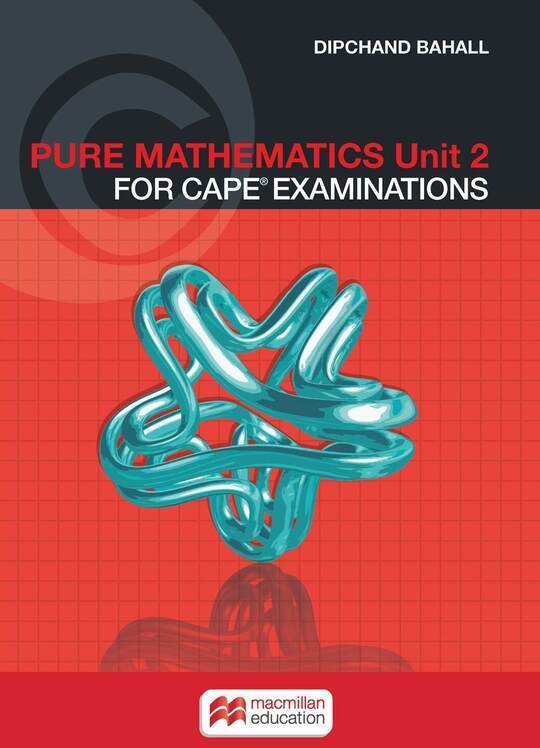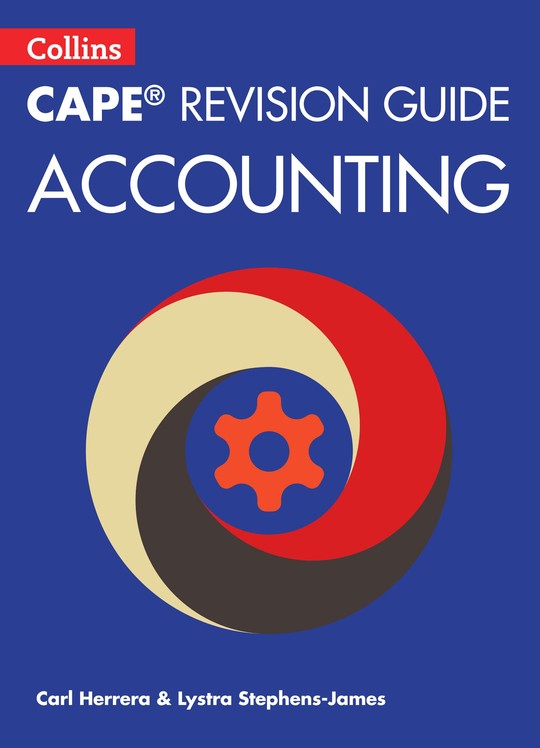
Physics for CAPE® Examinations
US$ 34.32
The publisher has enabled DRM protection, which means that you need to use the BookFusion iOS, Android or Web app to read this eBook. This eBook cannot be used outside of the BookFusion platform.
Description
Contents
Reviews
Language
English
ISBN
9780230499805
Cover
Title page
Copyright
Contents
Preface
UNIT 1 Mechanics, waves, properties of matter
Module 1 Mechanics
Chapter 1 Physical quantities and units
Why measurement?
The International System of Units (S.I.)
The neutrino experiment
Issues in scientific measurement
Revisiting the ‘speed of light’ and ‘the speed of the neutrino’ experiments
Calibrating an instrument
Graphical analysis
Vector and scalar quantities
Calculations involving vector quantities
Summary
Review questions
Practical exercises and challenges
Answers to ITQs
Answers to Review questions
Chapter 2 Linear motion and projectile motion
Linear motion and projectile motion
Position, distance and displacement
Speed and velocity
Acceleration
Equations of motion for constant acceleration
Graphs of motion
Projectile motion
Summary
Review questions
Practical exercises and challenges
Answers to ITQs
Chapter 3 Forces and motion
Aristotle, Galileo and Newton
Newton’s first law of motion
Newton’s second law of motion
Newton’s third law of motion
Newton’s laws and frictional forces
Newton’s laws and upthrust forces in fluids
Newton’s laws and resistive forces in fluids
Static and dynamic equilibrium
Summary
Review questions
Practical exercises and challenges
Answers to ITQs
Answers to Review questions
Chapter 4 Work, energy and power
Work and energy
Kinetic energy
Potential energy
Conservation of energy
Power
Sources of energy
Electrical power generation, distribution and consumption
Summary
Review questions
Practical exercises and challenges
Answers to ITQs
Answers to Review questions
Chapter 5 Momentum and collisions
Linear momentum
Linear momentum and impulse
Force versus time graphs
Practical applications of the impulse concept
Conservation of linear momentum
Elastic and inelastic collisions
Discovery of the neutron
Summary
Review questions
Practical exercises and challenges
Answers to ITQs
Answers to Review questions
Answers to Review questions
Chapter 6 Circular motion and gravitation
Kinematics of uniform circular motion
Dynamics of uniform circular motion
Dynamics of gravitational motion
Summary
Review questions
Practical exercises and challenges
Answers to ITQs
Answers to Review questions
Module 2 Oscillations and waves
Chapter 7 Harmonic oscillations
Simple harmonic motion (SHM)
The equations of SHM
Mass–spring oscillators
The simple pendulum
Forced oscillations and resonance
Damped oscillations
Summary
Review questions
Practical exercises and challenges
Answers to ITQs
Answers to Review questions
Chapter 8 Waves and their behaviours
Waves and energy transfer
Terms used in describing waves
Transverse and longitudinal waves
Progressive and stationary waves
Behaviours shown by waves
Summary
Review questions
Practical exercises and challenges
Answers to ITQs
Answers to Review questions
Chapter 9 Light: rays and waves
Ray and wave optics
Propagation of light
Reflection from plane surfaces
Refraction at plane surfaces
Refraction at curved surfaces
Lens usage in optical instruments
Diffraction of light
Polarization of light
Position of light in the electromagnetic spectrum
Light: rays or waves?
Summary
Review questions
Practical exercises and challenges
Answers to ITQs
Answers to Review questions
Chapter 10 Sound
Describing sound
Sound waves
Response of the human ear to sound levels
Musical instruments
Summary
Review questions
Practical exercises and challenges
Answers to ITQs
Answers to Review questions
Module 3 Thermal and mechanical properties of matter
Chapter 11 Thermometry
Introduction
Thermodynamic interpretation of temperature
Temperature scales
Variation of physical properties with temperature
Practical thermometers: design and usage
Summary
Review questions
Practical exercises and challenges
Answers to ITQs
Answers to Review questions
Chapter 12 Thermal properties of matter
Introduction
Heat and internal energy
Specific heat capacity
Determination of specific heat capacity
by method of mixtures
Determination of specific heat capacity
by electrical methods
Specific latent heat
Determination of specific latent heat by method of mixtures
Determination of specific latent heat by electrical methods
Boiling and evaporation
Practical importance of thermal properties
Summary
Review questions
Practical exercises and challenges
Answers to ITQs
Answers to Review questions
Chapter 13 Heat transfer
Introduction
Thermal conduction
Thermal convection
Thermal radiation
Applications involving energy transfer
Heating and keeping cool in the Caribbean
Summary
Review questions
Practical activities and challenges
Answers to ITQs
Answers to Review questions
Chapter 14 Kinetic theory of gases
Basic assumptions of the kinetic theory of gases
Gas pressure and the kinetic theory
Equation of state for an ideal gas
Gas temperature and the kinetic theory
Summary
Review questions
Practical exercises and challenges
Answers to ITQs
Answers to Review questions
Chapter 15 First law of thermodynamics
First law of thermodynamics
The first law and thermodynamics processes
Molar specific heat capacities of a gas
Efficiency of a cycle
Summary
Review questions
Practical exercises and challenges
Answers to ITQs
Answers to Review questions
Chapter 16 Mechanical properties of matter
A simple kinetic model of matter
Solids, liquids and gases
Density of materials
Crystalline and amorphous solids
Crystalline solids
Amorphous solids
Glasses and ceramics
Elasticity in solids
Summary
Review questions
Practical exercises and challenges
Answers to ITQs
Answers to Review questions
UNIT 2 Electricity and magnetism, a.c. theory and electronics, atomic and nuclear physics
Module 1 Electricity and magnetism
Chapter 17 Electric charges and fields
Static electricity
Conductors and insulators
Charging and discharging
Hazards of static electricity
Applications of static electricity
Electric forces
Electric fields
Motion of charged particles in an electric field
Electric potential
Potential difference
Summary
Review questions
Practical exercises and challenges
Answers to ITQs
Answers to Review questions
Chapter 18 Capacitors
Capacitance
Factors affecting capacitance
Capacitors in practical usage
Capacitor construction
Arrangements of capacitors
Capacitor charging and discharging (RC circuits)
Summary
Review questions
Practical exercises and challenges
Answers to ITQs
Answers to Review questions
Chapter 19 Current electricity and electrical circuits
Circuit principles
Ohm’s law
Electrical power equations
Resistivity
Theory of electrical conduction in a metal
Internal resistance
Circuit calculations and Kirchhoff’s laws
Resistors in series and parallel
The potential divider
The Wheatstone bridge
Summary
Review questions
Practical exercises and challenges
Answers to ITQs
Answers to Review questions
Chapter 20 Magnetic fields and their effects
Magnetic fields
The strength of a magnetic field: flux density
Force on a current-carrying conductor
Force on a moving charged particle
The Hall effect
The force between current-carrying conductors
Electromagnets
Summary
Review questions
Practical exercises and challenges
Answers to ITQs
Answers to Review questions
Chapter 21 Electromagnetic induction
Induced e.m.f.
Magnetic flux
Faraday’s law
The e.m.f. induced in a straight conductor moving through a magnetic field
Applications of electromagnetic induction
Summary
Review questions
Practical exercises and challenges
Answers to ITQs
Answers to Review questions
Module 2 A.c. theory and electronics
Chapter 22 Simple semiconductor devices
Voltage and current sources
Conductors, semiconductors and insulators
The p-n junction diode
The p-n junction transistor
Transducer usage in electronic circuits
Summary
Review questions
Practical exercises and challenges
Answers to ITQs
Answers to Review questions
Chapter 23 Operational amplifiers
The operational amplifier
The ideal operational amplifier
Real operational amplifiers
Op-amp in open loop mode
Open loop circuit applications
Op-amp in closed loop modes
Closed loop (inverting) applications
Real operational amplifiers: closed loop (non-inverting) configurations
Impedance matching
Summary
Review questions
Practical exercises and challenges
Answers to ITQs
Answers to Review questions
Chapter 24 Logic gates
Logic gates
Types of logic gates
Equivalents of combinations of gates of different types
Equivalents of combinations of gates of the same type
Control by combinations of logic gates
Binary addition using logic gates
Timing diagrams and logic gates
Bistable circuit
Summary
Review questions
Practical exercises and challenges
Answers to ITQs
Answers to Review questions
Module 3 Atomic and nuclear physics
Chapter 25 Atomic structure
Atomic theory
The Millikan oil drop experiment
Models of the atom
Atomic spectra
The atomic nucleus
X-rays
Medical uses of X-rays
Summary
Review questions
Practical exercises and challenges
Answers to ITQs
Answers to Review questions
Chapter 26 Radioactivity
Historical introduction
Nuclear instability
Types of radiations and their properties
Equations of nuclear decay
Radiation hazards
Radioactive decay laws
Applications of radioisotopes
Detectors of radiation
Summary
Review questions
Practical exercises and challenges
Answers to ITQs
Answers to Review questions
Chapter 27 Energy from the nucleus
Introduction to nuclear energy
Mass defect and binding energy
Nuclear energy: units and calculations
Binding energy per nucleon
Fission and fusion
Summary
Review questions
Practical exercises and challenges
Answers to ITQs
Answers to Review questions
Chapter 28 The photoelectric effect and wave–particle duality
Photons: E = hf
The photoelectric effect
Investigating the photoelectric effect
The Einstein equation
Applications of the photoelectric effect
Matter waves
Summary
Review questions
Practical exercises and challenges
Answers to ITQs
Answers to Review questions
CAPE SBA
Appendix
Appendix 1: Base unit definitions in the S.I.
Appendix 2: Prefixes and conversions
Appendix 3: Mathematics help
Index
Back Cover
The book hasn't received reviews yet.











